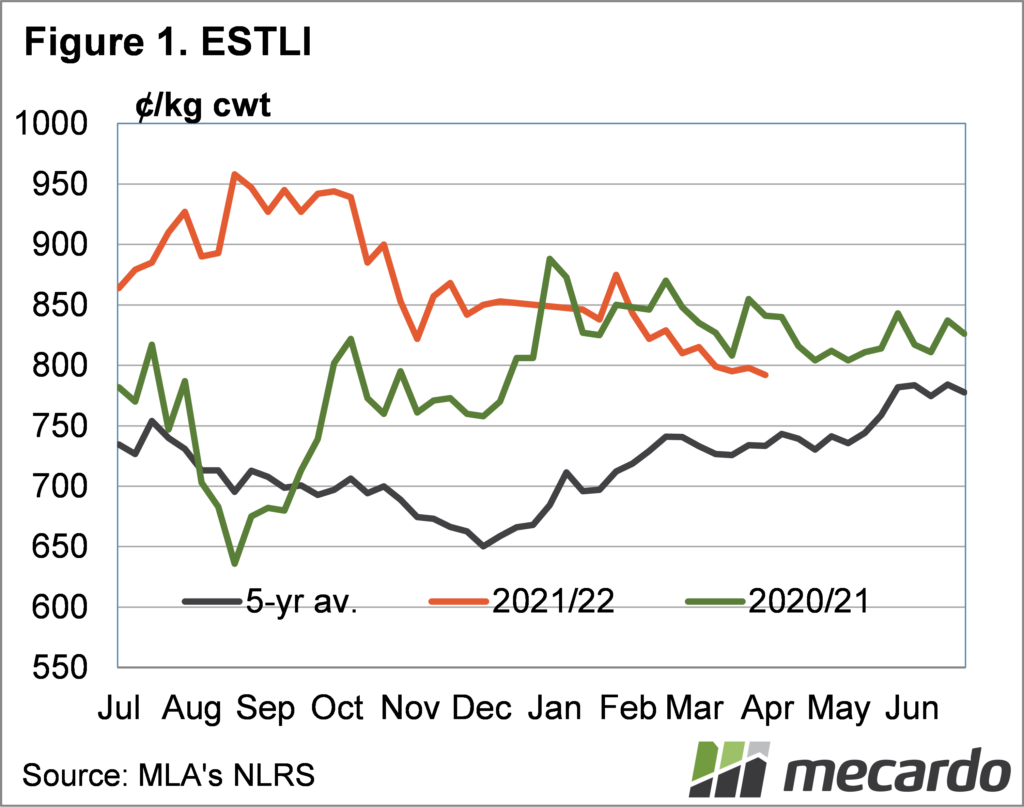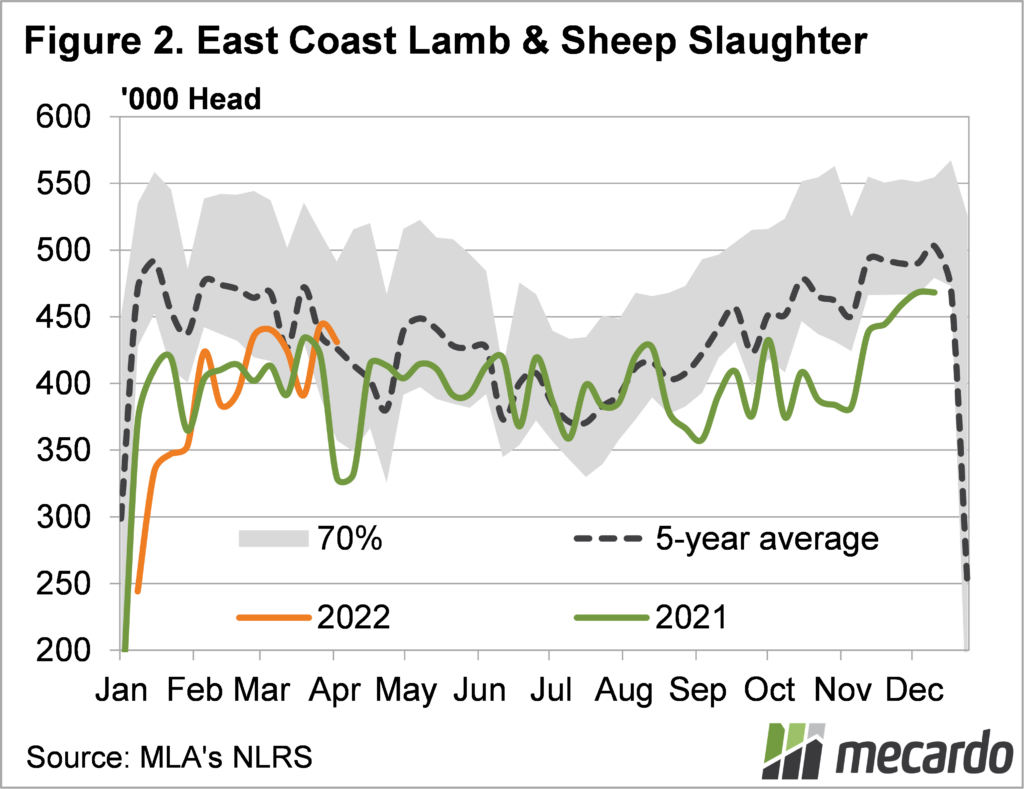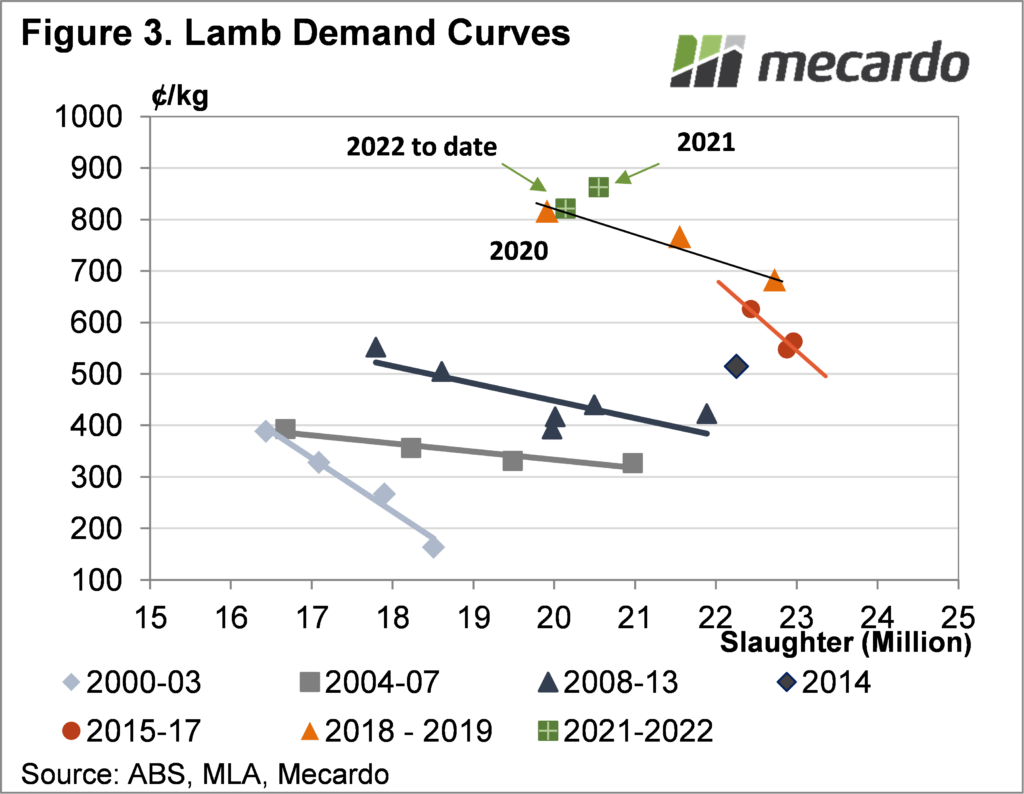For a number of years, we have been talking about strengthening demand for lamb, with year on year increases in saleyard prices rising even when slaughter was higher. The first quarter of 2022 has seen weakening demand for the first time, but it’s not at the consumer end.
Drifting is a word we could use to describe the price trend in the lamb market at the moment. Figure 1 shows the Eastern State Trade Lamb Indicator (ESTLI) on a downward trend, not dissimilar to last year.
Current lamb prices are by no means disastrous, but it is hard to look back at store prices late in 2021 and early in 2022 and wonder what has happened to the market. This is especially the case when we look at slaughter in figure 2. Lamb slaughter was higher in the last month of 2021 than it has been for most of 2022, yet prices are around 50¢ lower.
Lower slaughter and lower prices suggest weaker demand. A demand curve shows how supply relates to price. With lamb we use slaughter as a measure of supply, and the ESTLI as a measure of price. Generally, when there is slaughter space available, the ESTLI is a reasonable reflection of export demand. This doesn’t seem to be the case at the moment.
Figure 3 shows annual east coast lamb slaughter on the x axis, and the average ESTLI on the y axis. If the point shifts to the right, it suggests an increase in demand, as processors pay more for the same or more lambs.
To get a point for 2022 we have taken the 2% fewer lambs slaughtered (based on MLA’s weekly numbers), and used the average ESTLI. Compared to 2021, which is a full year of data, the point has shifted to the left. Processors have paid less for fewer lambs.
What does it mean?
With export value data only available for January, it’s hard to get a good measure of export demand, but the prices published for the US market suggest demand is stronger in export markets, if anything. The weaker demand at a local level is due to delayed supplies as Covid impacted workforces earlier in the year, and continued labour issues in getting facilities up to capacity.
If lamb supply weakens, there is a good chance lamb prices could go back towards 900¢, but it’s big if, with more lambs on the ground this year, and slaughter still not high enough to clear the backlog.
Have any questions or comments?
Key Points
- Despite lower slaughter, lamb prices have been weaker in the first quarter, suggesting weaker demand.
- On the demand curve lamb has shifted to the left, with demand similar to 2020.
- Export prices suggest overseas demand remains strong, which should translate to saleyard prices, if and when supply weakens.
Click on figure to expand
Click on figure to expand
Click on figure to expand
Data sources: MLA, ABS















